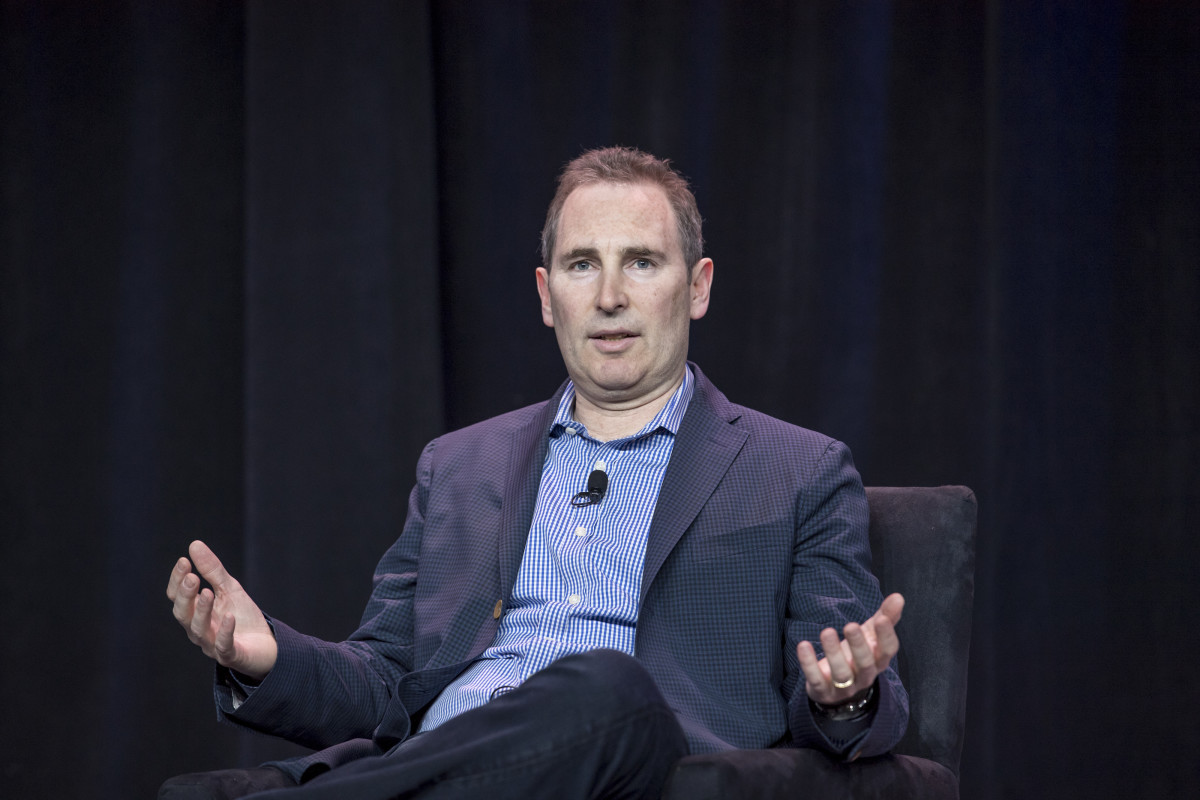
Amazon is an e-commerce colossus serving hundreds of millions of customers with rock-bottom prices and fast delivery. However, its status as online retail’s most successful company isn’t what's behind its rocketing stock price.
Instead, investors have piled into Amazon stock on optimism that it will benefit from a surge in spending on artificial intelligence. Amazon Web Services is the market-share leader in cloud data solutions, making it ground zero for AI research and development.
The potential to profit from demand associated with training and operating AI apps has helped Amazon’s share price swell 85% in the past year and 14% year-to-date.
The rapid runup is good news for investors, but it does raise the question: What happens now?
In November Real Money Pro’s Bruce Kamich calculated a $200 price target for Amazon shares. They haven’t reached Kamich’s target, but the gains have been significant enough to prompt him to update his analysis, including a revamped price outlook.

Amazon benefits from soaring interest in AI
Jeff Bezos founded Amazon as an online bookseller in his garage in 1994. Today, the company sells almost everything everywhere, competing fiercely for market share against major retailers including Walmart, Target and Costco.
E-commerce accounts for the bulk of Amazon’s quarterly sales, but AWS cloud solutions make the most profit.
AWS was only a budding business 15 years ago. Nowadays, it generates nearly $100 billion in annualized revenue by helping companies and governments store, protect, analyze and access data in the cloud.
The need for workers to access data remotely during covid lockdowns accelerated opportunities for AWS to embed itself more deeply with its customers. Those relationships are paying off this year as users investigate how to make the most of AI.
For example, finance companies are using AI to hedge risks, health-care companies are evaluating AI’s ability to improve drug development, and retailers are seeking to use it to prevent theft.
Seemingly, everyone is exploring how AI, including large-language models like OpenAI’s ChatGPT, may help them.
That’s a boon to Amazon because much of the training and use of AI apps is happening on its servers.
In Q4, AWS revenue grew 13% year-over-year to $24.2 billion. Revenue in the third quarter increased 12% from a year earlier to $23.1 billion.
Amazon CEO Andy Jassy thinks AWS has a long AI runway.
"There’s a lot of growth in front of AWS; I’m very optimistic about it,” said Jassy last year. "Customers want to bring the models to their data, not the other way around. And much of that data resides in AWS."
AWS market share in cloud solutions is 32%, above Microsoft's Azure and Alphabet's Google Cloud market share of 23% and 10%, respectively.
Amazon gets promoted to the Dow 30
The Dow Jones Industrial Average is composed of America's largest and most influential companies.
The holdings in the Dow 30 don’t change very often (the last additions were Amgen, Honeywell and Salesforce in 2020), so Amazon’s promotion into the Dow on Feb. 26 is capturing attention.
The opportunity to add Amazon to the Dow presented itself when Dow member Walmart split its shares. A price-weighted index, the lower price resulting from Walmart’s 3:1 split, created some wiggle room.
More Wall Street Analysts:
- Analyst who correctly warned Tesla stock could fall unveils new target
- Analysts race for new Palo Alto Networks price targets as shares plunge
- Analyst who forecast Nvidia stock could exceed $750 revamps target
To make more space, the Dow decided to jettison Walgreens Boots Alliance (WBA) , the nation’s largest pure-play pharmacy chain.
Amazon was a natural fit for inclusion because it already boasts a $1.8 trillion market cap, and its reach includes retail and technology. Following its addition, Amazon now accounts for about 3% of the Dow Jones Industrial Average.
Amazon's charts reveal updated price target
Bruce Kamich is a technical analyst who has professionally analyzed price and volume charts and indicators for more than 50 years.
His experience using technical analysis enabled him to correctly be bullish on Amazon shares last summer, turn bearish on them in September, and calculate a price target of more than $200 in November when the shares were trading below $150.
Now that Amazon shares are near $175, Kamich recently updated his analysis, resulting in a new target price.
Amazon shares "have advanced since early 2023, but trading volume has been decreasing for more than a year,” wrote Kamich. “Old-time chart readers like myself would rather see trading volume increase in the direction of the trend.”
Kamich also noted that while the on-balance volume, a measure of up minus down day volume, is positive, it’s only “back to the levels seen in 2021 and early 2022.” He’s also somewhat concerned that the moving average convergence divergence oscillator, a momentum indicator, has “started to narrow.”
That’s not very bullish because it could suggest that Amazon’s rally is running out of steam.
Nevertheless, Kamich’s point-and-figure chart price calculations offer Amazon shareholders reassurance. Using a daily and weekly P&F chart, Kamich calculated Amazon price targets of $199 and $223, respectively.
The $223 price target is particularly alluring, but investors should remember that P&F charts don't predict time frames, and there's no guarantee that price targets will be met.
Kamich also says that if Amazon trades below $166, the daily price target may weaken, so investors will want to keep tabs on the shares to see how they act in the coming weeks.
Related: Veteran fund manager picks favorite stocks for 2024







